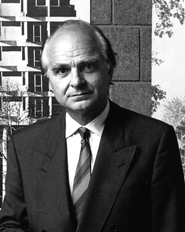 Carnegie Science Center rests dramatically on the Ohio River, at the confluence of coursing water, the majestic Pittsburgh Point and Three Stadium -a silent ship reaching out to welcome the visitor. The goal for this building was a spatial composition that hovers above the cr. recognizing the power of water and the continuity of sunlight, while being respectful of the human dimension.
Carnegie Science Center rests dramatically on the Ohio River, at the confluence of coursing water, the majestic Pittsburgh Point and Three Stadium -a silent ship reaching out to welcome the visitor. The goal for this building was a spatial composition that hovers above the cr. recognizing the power of water and the continuity of sunlight, while being respectful of the human dimension.
As a monument, it enriches the city as the fifth component of The Carnegie, joining the public library system, music hall, art museum and museum of natural history -- gifts that Andrew Carnegie gave to the city of Pittsburgh in 1895. Of these, it is the bold newcomer, seducing the visitor to participate, to experience vividly, to understand what might be possible for the future.
In architecture, the danger of establishing a form on which one imposes function must be carefully avoided. In the process of designing The c 'e Science Center, everything from the selection of materials to the ultimate design was generated by a series of discovery seminars and determined by programming. The outcome is a direct reflection of the vitality of the building's internal activities.
On the riverside facade, the earth swoops up to the entry and the sculptural massing unfolds -revealing the volume of the "light jewel," the Omnimax theater to the east, and the ramp atrium and auditorium to the west. Its disparate parts are connected by sweeping diagonal lines, walks and bridges, and are reinforced by the audacious use of texture and color. Within the building, the variety of its uses is designated by changes in floor level and ceiling profiles. The entrance lobby instills an overall sense of unity by using a modulated ceiling plane as a guide through the variety of internal spaces.
There are three primary components: the Omnimax theater, the planetarium/auditorium, and the exhibit space. These building components are linked and juxtaposed by a series of curved ramps and staircases. The feeling of space expands and contracts as the viewer moves along the intended route. Each exhibit area unfolds into the next, inciting a series of expectations. Light floods in through a sky-lit atrium above the Omnimax lobby where the river itself seems to spew up through the fountain.
Throughout the building, the curious visitor will find special comers, and viewing areas. These have their own sense of magic, and offer proof that such a building can be elegant and cognizant of the world of art while explicating the world of science and technology. The Carnegie Science Center, form and content present a partnership, enhancing art and architecture.

